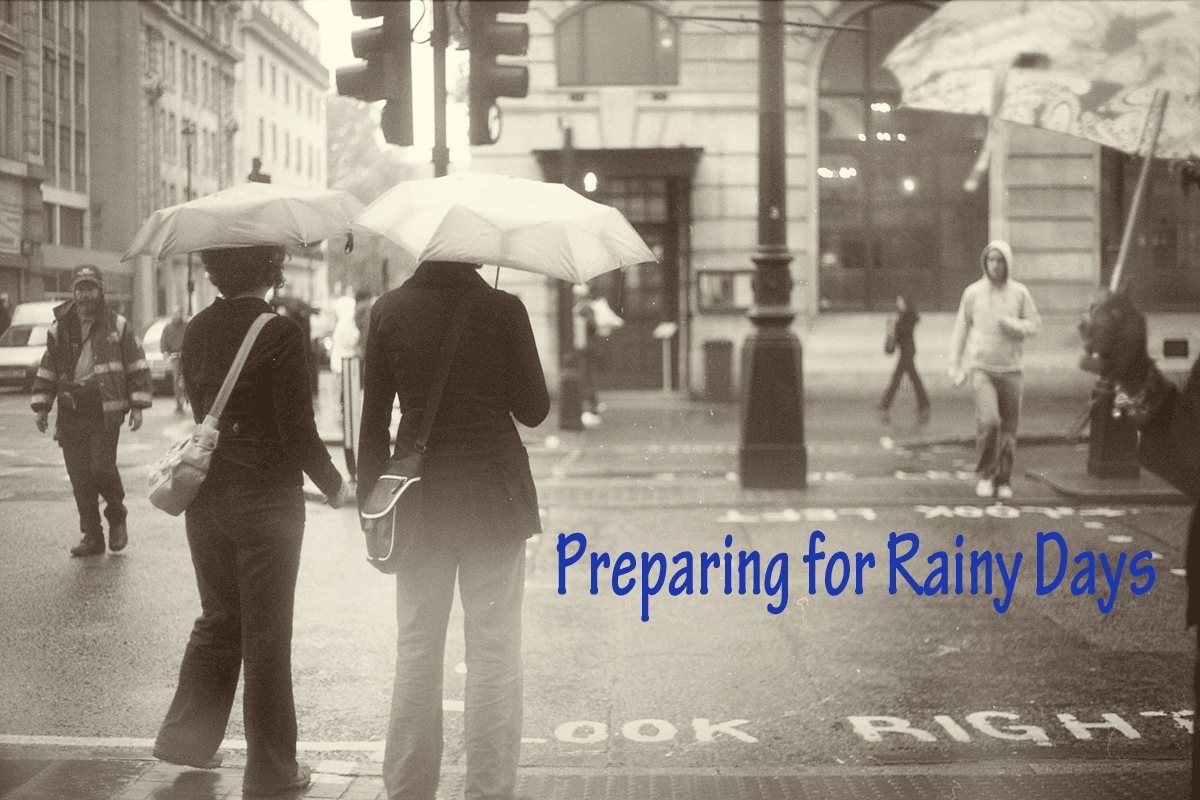Are you prepared for rainy days? In today’s post, we explore why it is important to build up an emergency fund and how you can do it.
Admittedly, this is hardly the sexiest topic to write about, but it is for sure not one to ignore. Thinking about your finances is not always fun, especially if the cash flow is not yet there where you want it, but it can save you from a lot of hardship later on.
I think it’s important to be prepared for rainy days, so that you can focus on your craft and business without worrying about financial “what ifs.”
Why do I need an emergency fund?
The brief answer: Because bad things happen in life. You want to be prepared if they happen to you.
According to a survey, have 28% of all American workers less than $1000 in savings. In another survey conducted this year the most frequent answer to what people worries most about money was “concern about insufficient ‘rainy day’ savings.”
Not only considering loss of income, what are the other things that bring people in serious trouble financially? Medical bills, accidents, auto repairs, weather damage, legal disputes, just to name a few.
If you have a high limit credit card, you may think that is buffer enough for an emergency. No, it isn’t! Because it is not your money. Banks can close credit card accounts without warning, and when you end up using credit to pay for emergencies, then you have to carry the interest on top of that.
Just think about that: If you assume you can pay the monthly credit card payments after the emergency, why not paying them forward in terms of savings now and avoid the interest entirely?
How much should I save?
Most financial experts recommend setting between three and six months worth of post-tax income aside. However, especially if you are self-employed this number may fluctuate quite a bit and consequently the more fluctuation you have, the more you should save.
Another way to look at it is to estimate your average monthly spending to get you covered. Web-based programs like Mint (free!) help to understand monthly spending without having to add up receipts every month.
Of course, there are a lot of other conditions that play into this, like your medical plan, whether you have short-term disability or legal insurance, whether you live alone, with a partner, have kids, etc.
The best answer is: save as much as possible. When your emergency savings goal is reached, continue to save what you can. If you have a business, it is also advisable to have two separate rainy day funds: One for the business and one for yourself.
How can I save and where should I keep the money?
For the likely case you don’t already have excess funds that you can set aside right now, you’ll have to save a certain amount every month until you reached your goal amount. The best method is to remove this money at the beginning of every month from the account that you use to pay for your monthly spending. Most banks offer automatic monthly money transfer from checking to a savings account for free. Treating this sum as a monthly expense is the best way to build up your rainy day funds over time. Just saving something every month is better than saving nothing at all.
If, for obvious reasons, you don’t want to keep the money inside your mattress then any dedicated account, for example, a free online savings account would work. The idea is that funds are separated from your regular checking and savings accounts. You won’t get the money immediately, but that bit of inconvenience may be enough to keep you from touching it for non-emergency spending.
What are emergencies?
As you decide to save for emergencies, you should also be clear about what you consider emergencies ahead of time. It sounds trivial, but this account is your last resort and should be treated like it.
The funds should not be used for expected expenses even if they come up out of nowhere. Thus, taxes, car maintenance, tools and makeup, and new business opportunities, for example, don’t count. An accident, your basement under water or an injury does.
Make it count!
Saving up the kind of funds mentioned here is tough and requires a lot of discipline and hard work. It may take several months if not even longer. But don’t forget you are in for the long run! Imagine how much better you’ll feel when you know that you are financially covered for a lot of unforeseen situations life may throw at you in the future. Start saving today!
Please contact us through email, Facebook, or Twitter and let us know if you have a business question we can help with. We are always happy to support Makeup Artists in all situations of their career!

